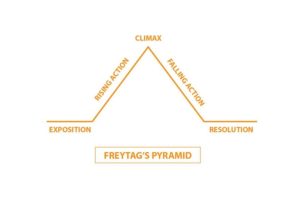
Stories have a long history as the teaching tool of choice, but not all are created equal – and not all are good for learners. At 16, I loved reading, yet I did not love “The Scarlet Letter.” Reading it was a slog. The odd language and old-timey morality left me cold. But Ms. Wester’s version? It went something like, “This particular adulteress didn’t feel so bad about her ‘sexy time with preacher.’ After years of everyone’s efforts to bring her low, when she and her secret, tortured guy met up alone in the woods, she was ready to go again.” What a difference two sentences can make.
Like any great teacher, Ms. Wester knew a lengthy lecture wasn’t the way to hook us. Instead, all it took was some relatable phrasing and a fresh spin. Learners crave these kinds of stories – the ones that draw us in, fire our imaginations, and, if we’re lucky, surprise us.
Knowing the potential of stories, why isn’t there better storytelling in training? Maybe time constraints are to blame. (We already have miles of ground to cover, and you want me to add more content?!) Or maybe a controlled, play-it-safe approach limits stories to flat, two-dimensional characters. (Employee A always gets it done right, and Employee B never does.) Unfortunately, this disconnect with real-world experiences prompts learners to give us the dreaded snarky-eye-roll-tired-sigh combo. Nobody wants that.
How to Build a Story
Take a minute. Stories can pack a powerful punch in a lot less time than you might expect. Remember, jokes are just short stories with a fun finish. Tweets can be 280-character personal stories shared on a vast scale. In short (pun intended), good stories won’t take time away from content; they are content. Well-chosen, well-placed stories can save time by focusing and clarifying your message.
Set the stage. Narrative organizers, such as well-known fairy tales and shared history, help learners interpret and classify incoming information. When you use each part of a story to introduce content, learners gain a strong sense of where they are in the training. This improves recall as learners associate new information with something they already know well. Moreover, the stories can double as metaphors to reinforce learning. The possibilities are limitless (and fun!). Delivering training on avoiding hidden dangers? Red Riding Hood is your girl. Or how about training on a new testing process? Goldilocks would work. She is, after all, the QA Queen (what with all that testing of porridge, chairs, and beds).
Add a twist. What if Goldilocks didn’t flee for her life but, instead, delivered her test results to the Bear family, leading to across-the-board improvements in porridge temperature, chair strength, and sleeping conditions? In and out of the classroom, people remember novelty. When faced with something new and surprising, we wake up and take notice. Take a story, turn it this way and that, locate those “what ifs,” and then surprise and engage your learners.
Bring the fun. Humor in your stories makes them especially memorable. Humor is also a time-tested antidote to stress, and learning new skills can certainly be stressful. There’s something funny in almost every situation. Find it and inject it into your stories whenever you can.
Make it personal. When learners hear a relatable story, they are more apt to remember it. Personal stories engage learners and encourage them to share their own experiences. This builds a relationship of mutual respect and trust between instructors and learners.
Keep it real. Even when a story is entertaining, if it isn’t realistic and relevant to the training, learners will notice. Rely on experts to confirm every story rings true. This ensures credibility and strengthens learners’ confidence in the training – and its usefulness to them when they’re back on the job.
Trust the classics. If you have a story to share, but aren’t quite sure how to tell it, learn from Gustav Freytag, a noted dramatist. Apply his pyramid model to structure any story – from case studies to informal anecdotes – with a hat tip to classic literature and drama.




